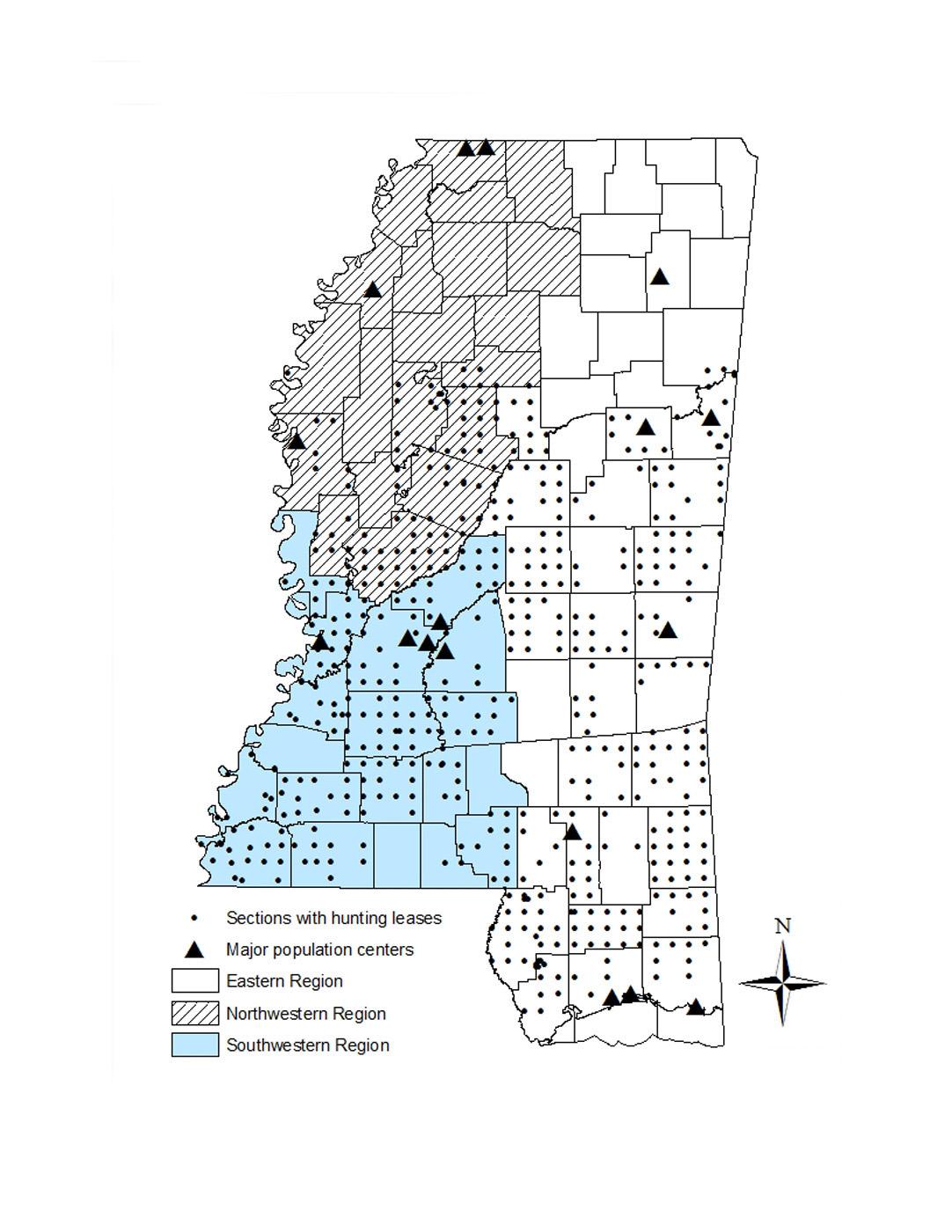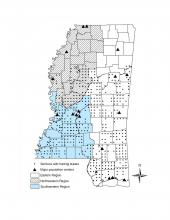Information Possibly Outdated
The information presented on this page was originally released on June 5, 2008. It may not be outdated, but please search our site for more current information. If you plan to quote or reference this information in a publication, please check with the Extension specialist or author before proceeding.
Hunting leases help fund K-12 educatio
MISSISSIPPI STATE -- The 600,000 acres of 16th section land located in 67 Mississippi counties generate more than $45 million each year and supplement a budget of more than $2 billion for K-12 education.
Sixteenth section land is public acreage set aside when the state was first surveyed to help fund education and other programs. The 15 counties in north Mississippi that do not have school trust lands receive annual appropriations to compensate for this lost source of local education funding.
Mississippi Secretary of State Delbert Hosemann reported there were 875 hunting leases on 16th section lands generating more than $2.5 million in 2005. Currently, there are about 300,000 acres of 16th section lands leased in 52 counties for hunting in the state. School districts advertise lease sales in local newspapers for two consecutive weeks before the lease auction, and award hunting leases to the highest bidder in a sealed bid auction.
Nearly 75 percent, or 447,261 acres, of 16th section land is classified as forest. This forestland is managed by the Mississippi Forestry Commission, which estimates that more than 100 timber sales occur each year on about 11,000 acres. Revenues from those timber sales average $15.2 million annually.
“An added benefit to school districts of classifying their 16th section land as forestlands and planting them in timber is that this same land can be for hunting and fishing purposes,” Hosemann said.
To understand the value of hunting leases on these lands, scientists in Mississippi State University's Forest and Wildlife Research Center initiated a study of 16th section land.
“Information from hunting leases on private forestlands is not ideal for determining values because these leases are typically priced in a noncompetitive manner,” said Ian Munn, forestry professor and economist.
Most hunting leases on nonindustrial private lands are not advertised or competitively issued, so they are inefficient and do not capture the full market value, Munn added.
The MSU study not only provides valuable information on factors affecting hunting lease prices, but it also will allow counties to determine ways to increase revenue on the public trust lands.
“We examined hunting leases on 16th section lands in Mississippi to determine the role that lease length, size of the lease area, habitat quality, market segmentation, game quality and distance to the closest urban area have on hunting lease prices,” Munn said.
The study revealed that the average annual lease price was $8.73 per acre with an average lease size of about 348 acres. Sixteenth section land can only be leased for hunting if it is forested. Pine stands represented 35 percent of the leased land, but findings indicated that hardwoods generate more revenue.
“Land managers may consider leaving hardwood in stands to provide better habitat for game and increase revenues,” Munn said.
Results of the study also indicated that leases for smaller amounts of land brought higher per-acre prices than leases for larger tracts.
“This result indicates that land managers can increase the amount of revenue generated from leasing by offering hunting leases five years or less in duration and by offering smaller-sized leases,” Munn said.
Dividing large hunting leases into multiple smaller hunting leases, on average, would generate more per-acre revenue, he added.
The scientists also found that the average per-acre hunting lease price for 16th section lands of $8.73 was substantially higher than the $6.50 per acre average received for similar leases on nonindustrial private lands in Mississippi.
Contact: Dr. Ian Munn, (662) 325-4546





